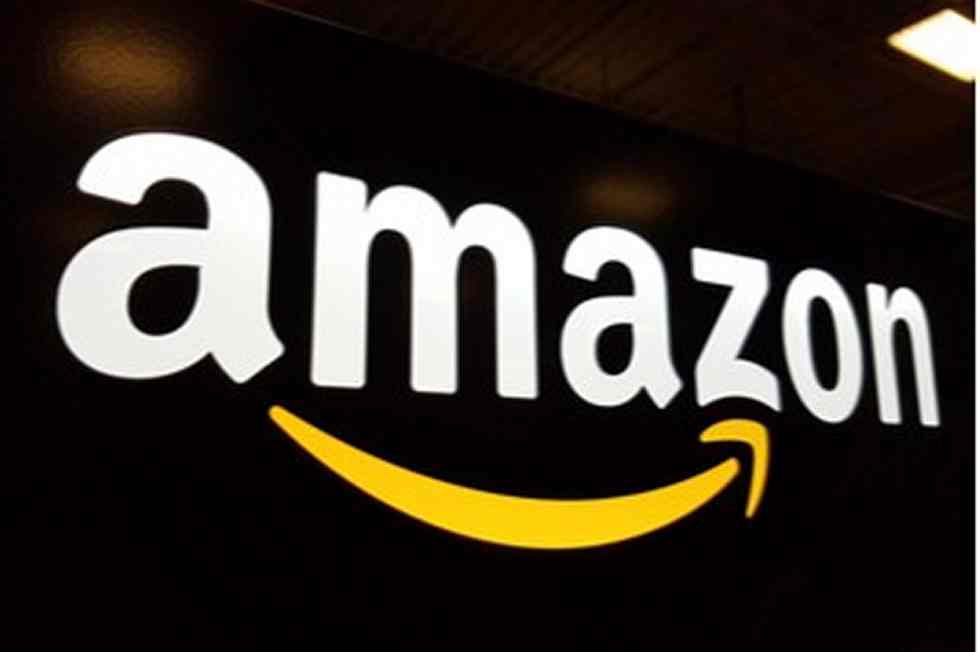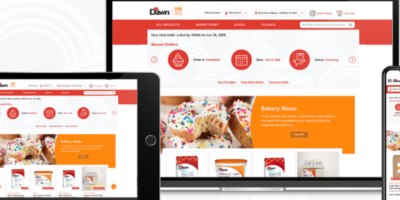
Vacation shopping for throughout Cyber 5, which incorporates the 5 days from Thanksgiving to Cyber Monday, noticed U.S. customers spending $33.90 billion on-line, in line with knowledge from Adobe Analytics. Whereas the numbers had been formidable, it was simply shy of the document $34.36 billion in digital income throughout the identical lengthy weekend final 12 months and represented a slight 1.4% year-over-year dip. It nonetheless marks a 19.0% leap over the extra regular pre-pandemic spending ranges in 2019.
One optimistic was that over the November timeframe (1-29), 22 days had exceeded $3 billion in on-line spending. This early buying set a brand new milestone and contrasts with solely 9 days topped hitting that threshold and suggests a brand new regular for customers and retailers alike.
Although revenues are recognized, it’s nonetheless instructive to have a look at the Cyber 5 in anticipation of what lies forward for the rest of the vacation season. It additionally might inform how 2022 will form up, together with what shopper conduct turns into everlasting and what might have simply factored into client buying conduct in the course of the pandemic. When taking a look at 2021 by itself, the numbers make sense, however their three-year comparability could also be most fascinating. This knowledge means that conduct patterns mirror 2019, with 2020 buying patterns closely influenced by COVID-19 anomalies. This analysis was a part of our Digital Commerce 360/Bizrate Insights 2021 Cyber 5 survey carried out in early December, instantly after the vacation interval ended. Survey respondents for every year are as follows: 2021 (1147) vs. 2020 (1113) vs. 2019 (1073).
When requested what share of their vacation reward shopping for was full as of 12/1, the findings had been as follows:
- At the very least half: 55%
- Lower than half: 30%
- No buying finished: 15%
Given provide chain woes, vacation buying is just not as full as one may count on. 12 months-over-year, when evaluating those that have completed over half their vacation buying, web shoppers have accomplished much less of their vacation reward shopping for. When it got here to hitting the vacation buying midway level, 2020 noticed a peak of 65% and 2019 got here nearer to 2021’s numbers at 57%.
Now let’s flip our consideration to on-line buying. Right here 59% of surveyed web shoppers report having accomplished at the very least half of their reward shopping for on-line, whereas 34% report having purchased lower than half so far and the remaining 7% opted to not store on-line in any respect.
The three-year patterns for completion on-line are like basic buying conduct. 12 months-over-year, web shoppers have accomplished barely much less of their vacation shopping for on-line, with 2020 COVID-strong at 66% and 2019 on par with 2021 at 57%. After all, we count on that bodily shops could also be taking among the enterprise from on-line post-COVID. Having labored in retail for over 4 a long time, I can’t assist however assume that procrastination should be an element. That is regardless of 2021’s unprecedented retailer efforts to encourage early shopping for.
The availability chain might show to be the story of the season. Distinct shopper conduct is obvious. Early shopping for is an element for some, whereas customary vacation buying conduct stays for others. Surprisingly, solely 34% of respondents indicated they’d bought extra items resulting from these considerations and 66% had bought the identical or much less, suggesting they felt no sense of urgency.
Retailers must assess the impact of in-store buying on the finish of the 2021 vacation season. Within the meantime, conduct patterns are much less clear:
- 31% of customers surveyed shopped extra in shops.
- 34% mentioned they shopped in shops the identical quantity as final 12 months.
- 35% shopped in shops lower than in 2020.
Retailers might want to monitor this as we transfer into the brand new 12 months.
The load of key holidays might have lessened
Simply over half of customers took benefit of Black Friday whereas 1 in 3 customers purchased on-line over Cyber Monday and Thanksgiving weekend. The vacation penetration for key days was as follows:
- Black Friday: 51%
- Cyber Monday: 37%
- Thanksgiving Weekend: 35%
It bears examination and leads me to conclude that on-line buying is as a substitute a month-long marathon. Customers are now not as centered on Cyber 5 vacation buying past Black Friday, now perceived as having the most effective offers.
Throughout the Thanksgiving interval, customers’ shopping for was extra restricted as customers gathered in-person with household and buddies on this post-COVID 12 months. Cyber-Monday buying additionally noticed vital declines amongst customers on-line whereas Black Friday buying was on par with previous years. Its penetration is as follows:
Cyber Monday
- 2021: 37%
- 2020: 56%
- 2019: 58%
Black Friday
- 2021: 51%
- 2020: 57%
- 2019: 53%
Retailer choice is based on free transport and featured merchandise that hopefully are in-stock
Customers are at all times trying to save. For 42%, that quest begins with free transport. Interesting promotions had been additionally an element in the course of the Cyber 5 for 33% of these surveyed. Discovering the precise merchandise and having them in inventory was second solely to free transport when it got here to retailer choice. Customers eager to know if merchandise are in-stock issue is heightened in at the moment’s local weather, with 36% contemplating its standing. And as at all times, liking the featured merchandise nonetheless issues to customers. Customers have lengthy recollections and previous experiences are essential given the 22% who cited earlier expertise with a retailer. The usage of want lists is a comfort that customers have come to get pleasure from and 22% did simply that over this previous Cyber 5 vacation. It’s essential to strengthen that whereas there are a lot of nuances to shopper conduct, in the long run, they don’t trump worth on the subject of retailer choice.
Because it seems, money-saving alternatives could also be a extra limiting consider retailer choice as customers noticed them much less over the Cyber 5. This is applicable to free transport which has seen declining numbers year-over-year.
After we requested survey contributors about their experiences with on-line promotions, there was no clear sample. From a quantity perspective, 29% mentioned they had been about the identical, 27% noticed them as available and solely 18% believed they had been more durable to return by. It’s fascinating to notice that 25% felt the vary of reductions diversified by websites they shopped. The give attention to the a part of the patron might have additionally mattered as 24% indicated they had been extra centered on discovering promotions. Solely 13% mentioned they weren’t as involved, which leads me to consider that early shopping for didn’t meet expectations.
Free shipping is prime to customers
Most web shoppers (55%) obtained free transport on at the very least 75% of their orders. Attributable to inventory ranges, retailers might have restricted provides for unconditional free transport in favor of getting customers spend at a pre-established threshold to garner this profit. Such methods would then scale back the variety of customers who may benefit from this provide.
Customers had been challenged to seek out free transport as they’d in previous years. A comparability of these customers the place 75% or extra of their orders had free transport is instructive:
- 2021: 55%
- 2020: 66%
- 2019: 78%
Cyber-5 customers self-consume
Now let’s flip to a few of customers’ actions in the course of the Cyber-5 timeframe. Internet buyers optimize time with gifting and private buying, which topped the exercise checklist at 40%. Provide chain woes meant extra give attention to supply as 27% checked for estimated supply dates on merchandise of curiosity and 24% checked product availability on-line earlier than inserting an order for supply. Even 12% took benefit of the rising variety of retailers now providing same-day supply. Cellular buying stays a essential comfort, with cellular internet utilization at 27% and app utilization at 23%. Omnichannel exercise was vital the place 22% of survey respondents examine retailer product availability and 21% retailer data, doubtless in anticipation of a go to. I used to be stunned to see in-store pickup at solely 13%, with curbside at 9% although they could be casualties of a post-COVID period. 14% of customers surveyed have already bought bodily reward playing cards have already been bought. 11% purchased their digital counterparts. Given provide chain woes, a last-minute push is anticipated on the digital entrance.
Cyber 5 sees a brand new regular and will turn into extra unfold out. Customers are properly together with their vacation reward shopping for and on-line buying nonetheless performs a outstanding function. Retailer exercise seemed to be blended amongst our web shoppers. The availability chain doesn’t appear to have frontloaded as a lot buying as one may need anticipated although Black Friday was nonetheless robust and most dominant among the many Cyber 5 days. Promotions, particularly free transport, weren’t as prevalent, impacting general efficiency. It is going to be important to watch how aggressive retailers will likely be as the ultimate days of the season ramp up and whether or not customers full last-minute buying in-store. We will likely be watching as we wish to perceive how customers’ conduct performs out for the remainder of the 12 months and, extra importantly, into 2022.
Favourite




















